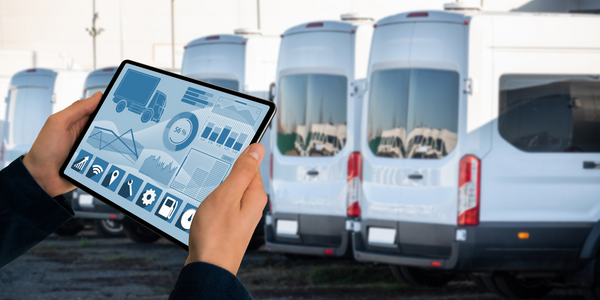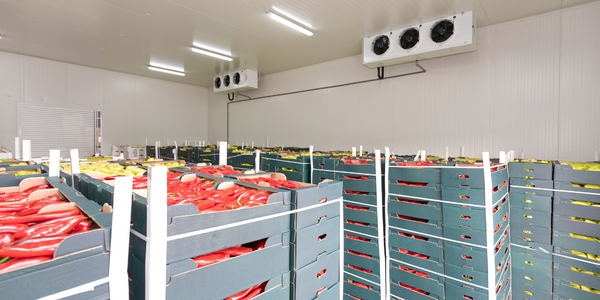Getting Into High GEARS: Police in LaGrange, Georgia Use Crash-Reporting Technology to Manage Resources, Maintain Public Safety
Customer Company Size
Mid-size Company
Region
- America
Country
- United States
Product
- Georgia Electronic Accident Reporting System (GEARS)
- LexisNexis Risk Solutions
Tech Stack
- Electronic Crash Reporting System
- Data Analysis Tools
Implementation Scale
- Enterprise-wide Deployment
Impact Metrics
- Productivity Improvements
- Cost Savings
- Customer Satisfaction
Technology Category
- Functional Applications - Remote Monitoring & Control Systems
- Analytics & Modeling - Predictive Analytics
Applicable Industries
- Security & Public Safety
- Transportation
Applicable Functions
- Field Services
- Business Operation
Use Cases
- Vehicle Telematics
- Fleet Management
- Predictive Maintenance
Services
- System Integration
- Data Science Services
About The Customer
The LaGrange Police Department, located in LaGrange, Georgia, is a forward-thinking law enforcement agency led by Chief Louis Dekmar. The department has been proactive in adopting new technologies to enhance public safety and improve operational efficiency. With a focus on traffic safety, the department has been a leader in implementing innovative solutions to better serve their community. The department handles a significant volume of traffic incidents, with 2,444 accidents reported in the previous year, necessitating efficient data management and resource allocation.
The Challenge
Police departments in Georgia faced significant delays in processing crash data due to the manual, paper-based system in place before 2009. This lag hindered the ability of law enforcement, local officials, and public safety stakeholders to make timely, data-driven decisions. The LaGrange Police Department, led by Chief Louis Dekmar, was particularly affected by these inefficiencies, which limited their ability to deploy resources effectively and improve traffic safety.
The Solution
In 2009, Georgia implemented the Georgia Electronic Accident Reporting System (GEARS), developed by a company that later became part of LexisNexis Risk Solutions. LaGrange was one of the first cities to adopt this system, which allowed for electronic collection, storage, and analysis of crash data. This transition from paper-based reporting to an electronic system significantly improved the efficiency of data processing. GEARS enabled the LaGrange Police Department to quickly access and analyze crash data, allowing for more informed decision-making. The system also facilitated better deployment of traffic enforcement personnel to high-priority areas, enhancing public safety and resource management.
Operational Impact
Quantitative Benefit

Case Study missing?
Start adding your own!
Register with your work email and create a new case study profile for your business.
Related Case Studies.

Case Study
Airport SCADA Systems Improve Service Levels
Modern airports are one of the busiest environments on Earth and rely on process automation equipment to ensure service operators achieve their KPIs. Increasingly airport SCADA systems are being used to control all aspects of the operation and associated facilities. This is because unplanned system downtime can cost dearly, both in terms of reduced revenues and the associated loss of customer satisfaction due to inevitable travel inconvenience and disruption.

Case Study
IoT-based Fleet Intelligence Innovation
Speed to market is precious for DRVR, a rapidly growing start-up company. With a business model dependent on reliable mobile data, managers were spending their lives trying to negotiate data roaming deals with mobile network operators in different countries. And, even then, service quality was a constant concern.

Case Study
Digitize Railway with Deutsche Bahn
To reduce maintenance costs and delay-causing failures for Deutsche Bahn. They need manual measurements by a position measurement system based on custom-made MEMS sensor clusters, which allow autonomous and continuous monitoring with wireless data transmission and long battery. They were looking for data pre-processing solution in the sensor and machine learning algorithms in the cloud so as to detect critical wear.

Case Study
Cold Chain Transportation and Refrigerated Fleet Management System
1) Create a digital connected transportation solution to retrofit cold chain trailers with real-time tracking and controls. 2) Prevent multi-million dollar losses due to theft or spoilage. 3) Deliver a digital chain-of-custody solution for door to door load monitoring and security. 4) Provide a trusted multi-fleet solution in a single application with granular data and access controls.

Case Study
Vehicle Fleet Analytics
Organizations frequently implement a maintenance strategy for their fleets of vehicles using a combination of time and usage based maintenance schedules. While effective as a whole, time and usage based schedules do not take into account driving patterns, environmental factors, and sensors currently deployed within the vehicle measuring crank voltage, ignition voltage, and acceleration, all of which have a significant influence on the overall health of the vehicle.In a typical fleet, a large percentage of road calls are related to electrical failure, with battery failure being a common cause. Battery failures result in unmet service agreement levels and costly re-adjustment of scheduled to provide replacement vehicles. To reduce the impact of unplanned maintenance, the transportation logistics company was interested in a trial of C3 Vehicle Fleet Analytics.

Case Study
Smart City Public Safety
Amyx+ worked with a local government authority to develop an Internet of Things-enabled public safety strategy. In the current state, vigilance meant manually scanning through potentially hundreds of analog surveillance videos feeds. Manual, costly and ineffective, the local agency desired to transition from analog to digital CCTV, apply computer vision and other technologies to automatically detect potential crime in progress, expedite and streamline emergency calls and integrate with personal wearables to ensure the safety of their citizens.






